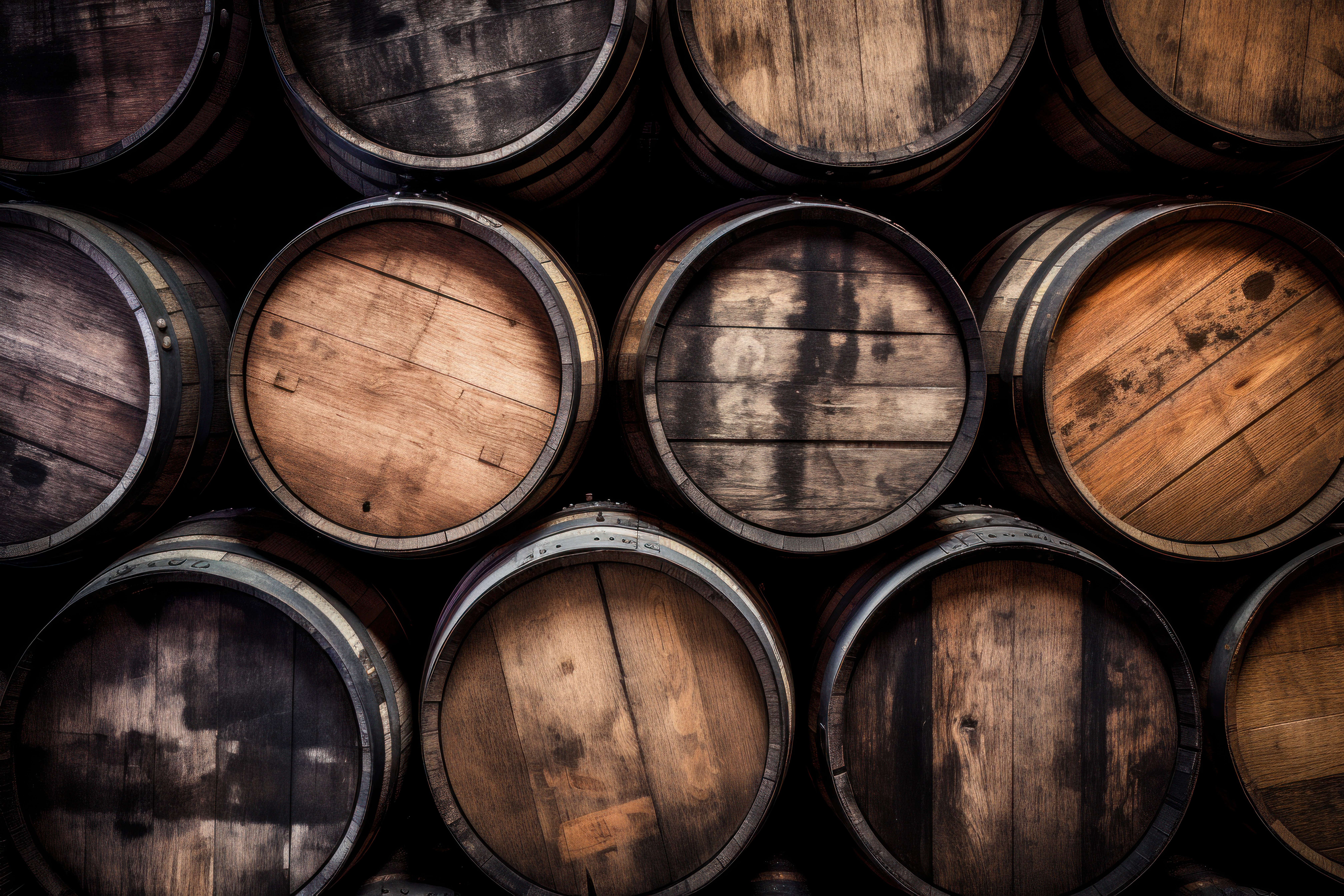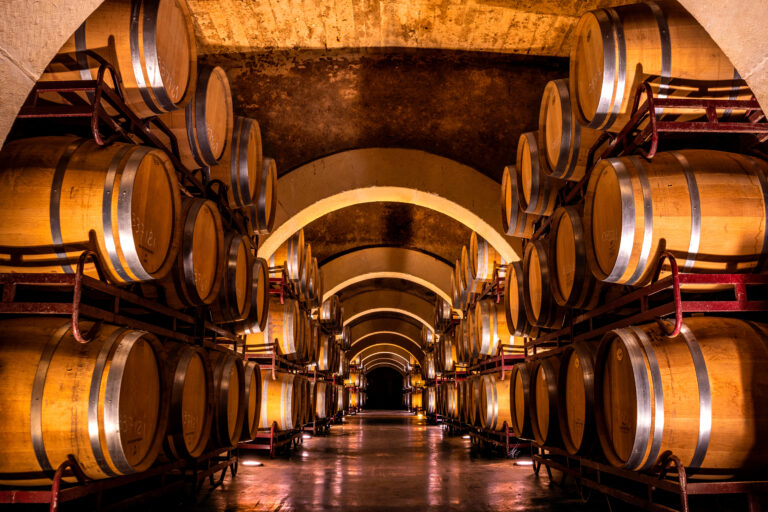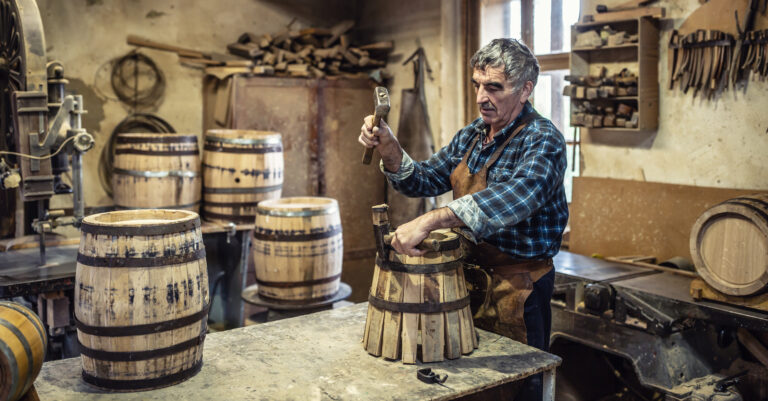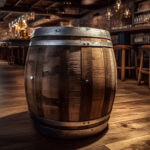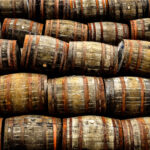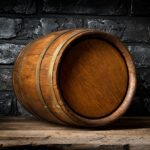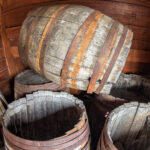Ever found yourself gazing at those towering stacks of whiskey barrels, wondering just how much they weigh? You’re not alone! It’s fascinating to think about the journey those barrels take, from holding the raw spirit to cradling the aged whiskey we love. Let’s dive into the world of whiskey barrels and uncover the secrets behind their weight.
Introduction to Whiskey Barrels
Whiskey barrels, often called casks, are like cradles for aging spirits. They come in various sizes, each with its own unique character. The most common ones you’ll encounter are the American Standard Barrel and the Hogshead.
- American Standard Barrel: This workhorse holds 53 gallons of whiskey during aging. When empty, it’s no lightweight, tipping the scales at around 132 to 143 pounds (60-65 kilograms).
- Hogshead Barrel: A bit larger than its standard counterpart, the Hogshead holds 63.5 gallons. You’ll need some extra muscle to move this one, as it weighs around 154 to 176 pounds (70-80 kilograms) when empty.
Of course, several things influence a barrel’s weight, like the type of oak used, the barrel’s size, and how thick the staves are. And don’t forget about the “angel’s share” – the whiskey that evaporates during aging. The longer the aging process, the more the angels take, and the lighter the barrel will get.
After their aging duties are done, some barrels get a new life as stylish decor, while others are spruced up and used again to age more whiskey. It’s a testament to their sturdy construction and the important role they play in crafting that smooth, complex flavor we enjoy in our whiskey.
Standard Sizes of Whiskey Barrels
Whiskey barrels come in a few common sizes, each suited for different purposes:
- 53 gallons: This is the classic full-size barrel, the go-to for aging bourbon and other whiskeys. After its time aging the good stuff, it’ll typically yield around 150-200 bottles of whiskey.
- 30 gallons: A mid-size option, perfect for smaller distilleries or those who like to brew their own spirits at home. Expect around 50-70 bottles of whiskey from this one.
- 15 gallons: A smaller size that’s great for homebrewers, craft distilleries, or personal use. You’ll get about 25-35 bottles of aged whiskey from this barrel.
- 5 gallons: This mini barrel is ideal for hobbyists or those who want a smaller batch of whiskey. Surprisingly, it can still produce 10-15 bottles of aged whiskey.
When choosing a barrel size, think about how much whiskey you want to end up with. Smaller barrels age whiskey faster because of the higher surface area to volume ratio. But if you’re after a smoother, mellower flavor, larger barrels are usually the way to go. Ultimately, the best size for you depends on your priorities: speed, flavor, or just the right amount of whiskey to enjoy.
Factors That Affect Whiskey Barrel Weight
Even when empty, whiskey barrels have a certain heft to them. Here are the things that influence their weight:
- Wood Type: The type of wood used makes a difference. Oak barrels, especially those made from white oak, are heavier than those made from red oak or other woods. White oak is simply denser, so you need more of it to make a barrel.
- Barrel Size: It’s no surprise that bigger barrels need more wood and heavier metal hoops to hold them together, so they weigh more.
- Wood Treatment: Barrels that have been charred or toasted on the inside – a common practice for aging whiskey – will be a tad lighter. The charring process burns away some of the wood, but the difference in weight is usually pretty small.
- Metal Parts: The metal hoops, straps, and rivets that hold the barrel together add to the overall weight. Larger barrels need sturdier metal components, so they’ll be heavier.
So, the type of wood, size, any treatments done to the wood, and the amount of metal all play a part in how much an empty whiskey barrel weighs. While the exact weight can vary, a typical new 53-gallon oak barrel will weigh somewhere between 70 to 90 pounds when empty.
Average Weight of a New, Empty Whiskey Barrel
On average, a new, empty whiskey barrel weighs around 88 to 110 pounds (40-50 kilograms). But as we’ve seen, the type of wood and the barrel’s size play a big role.
Traditional whiskey barrels are made from white oak, a tough and durable hardwood. These barrels tend to be on the heavier side. If a barrel is made from lighter softwoods like pine, it can be 22-33 pounds (10-15 kilograms) lighter.
Size matters too. The most common size, the standard bourbon barrel holding 53 gallons, weighs about 99 pounds (45 kilograms). Smaller quarter casks, holding 22.5 gallons, weigh around 77 pounds (35 kilograms). And the larger hogshead barrels, holding 63 gallons, come in at around 110 pounds (50 kilograms).
Don’t forget the extra weight from the barrel’s construction – the staves, hoops, and heads. Those metal hoops alone can add 7 to 11 pounds (3 to 5 kilograms) depending on the size.
Of course, once you fill the barrel with whiskey, the weight shoots up dramatically. A 53-gallon barrel full of bourbon can weigh well over 440 pounds (200 kilograms)!
So, if you’re planning to move full whiskey barrels, be prepared for a workout! But when they’re empty, a couple of people should be able to lift and move a typical oak whiskey barrel without too much trouble.
How Barrel Size Impacts Weight
The size of a whiskey barrel has a big impact on its weight, even when it’s empty. Here’s a quick rundown:
- Standard Barrel (53 gallons): Weighs around 60-65 pounds when empty.
- Hogshead (63 gallons): Adding those extra gallons bumps the weight up to around 70-75 pounds.
- Puncheon (84 gallons): This large barrel weighs in at a hefty 95-105 pounds when empty.
- Butt (126 gallons): The king-size barrel, a butt, can weigh a whopping 135-145 pounds empty.
So, if you’re looking for a barrel that’s easy to handle, stick with the standard size. But if you need a giant, be ready to deal with the extra weight!
The Effect of Wood Type on Barrel Weight
The type of wood used for a whiskey barrel really affects its weight. Even among oak barrels, there can be differences:
- American white oak barrels: These are on the lighter side, typically weighing 55 to 65 pounds when empty.
- European oak barrels (like French oak): These tend to be 10 to 15 pounds heavier than American white oak barrels because the wood is denser.
- Hickory wood barrels: These are the heavyweights, coming in at 75 to 85 pounds when empty. Hickory is super dense!
Besides the wood type, things like how thick the staves are and the overall size of the barrel also affect the weight. But generally, bigger barrels made from thicker, denser wood will be heavier than smaller barrels made from thinner, lighter wood.
Why Weight Matters for Whiskey Barrel Use
The weight of an empty whiskey barrel isn’t just a random number. It actually matters for a few reasons:
- Barrel Handling: Lighter barrels are easier to move around and transport. Heavy barrels require more effort and can be risky to handle if you’re not careful.
- Maturation: Believe it or not, the weight of a barrel affects how fast the whiskey matures. Lighter barrels let more oxygen in, which speeds up the process. Heavier barrels slow things down, allowing for a more gradual aging process.
- Barrel Life: A barrel’s weight can also indicate how long it will last. Lighter barrels tend to break down faster. Heavier barrels are more durable and can be used for longer aging times.
So, distillers need to choose the right barrel weight for their needs. It’s a balancing act between ease of handling, desired maturation speed, and how long they want to use the barrel.
Tips for Moving Heavy Whiskey Barrels
Moving those hefty whiskey barrels requires the right tools and some know-how. Here are some tips to make it easier:
- Use a barrel cart or dolly: Don’t risk injury by trying to move a full barrel by hand. Use a cart or dolly designed for this purpose.
- Get help: Barrel moving is a two-person job.
- Protect the barrel: Wrap the barrel in padding to prevent damage.
- Lift with your legs: Bend your knees and keep your back straight to avoid injury.
- Go slowly: Avoid sudden movements that could cause the barrel to tip over.
- Secure the barrel: Make sure the barrel is stable and secure in its new location.
- Be prepared for spills: Have rags and a mop handy just in case.
FAQ: Answering Common Questions on Empty Whiskey Barrel Weights
Here are some quick answers to common questions about empty whiskey barrel weights:
Q: How much does an empty standard size oak whiskey barrel weigh?
A: Around 70-85 lbs.
Q: How much does an empty barrel weigh after aging whiskey for a few years?
A: After 3-5 years, it will weigh 5-15 lbs less due to evaporation.
Q: Do charred oak whiskey barrels weigh more?
A: Yes, slightly more because they absorb a bit more whiskey.
Q: How much does an empty barrel weigh if used to age other spirits?
A: Around 60-80 lbs after 3-5 years, similar to a whiskey barrel.
Q: How can the weight of an empty barrel impact shipping costs?
A: Heavier barrels cost more to ship.
Final Thoughts
There you have it – the ins and outs of whiskey barrel weights. Next time you see those barrels stacked high, you’ll have a newfound appreciation for their role in crafting your favorite whiskey. It’s a reminder that even the simplest things can have a big impact on the final product. Cheers to those sturdy barrels and the delicious whiskey they help create!
